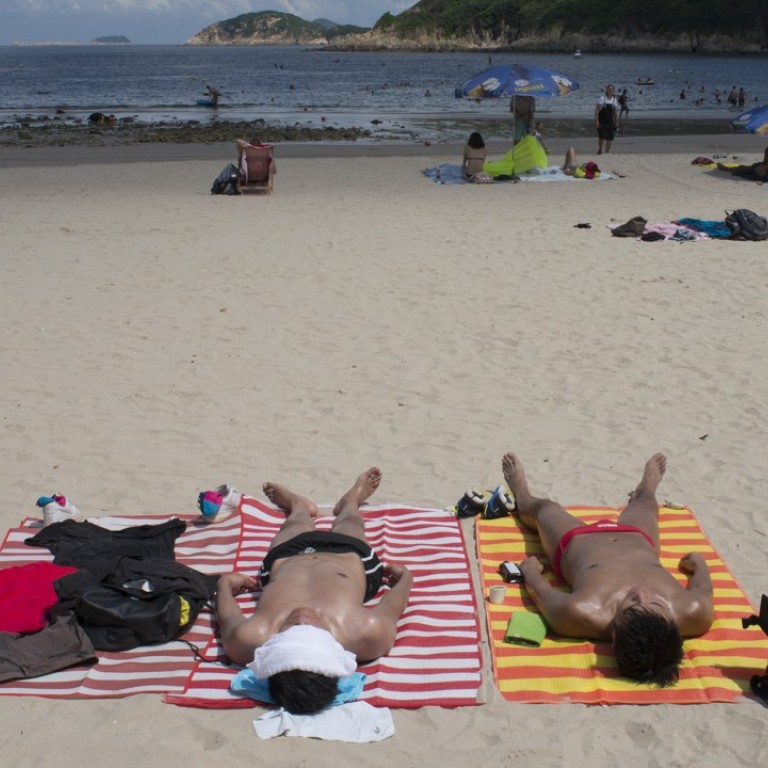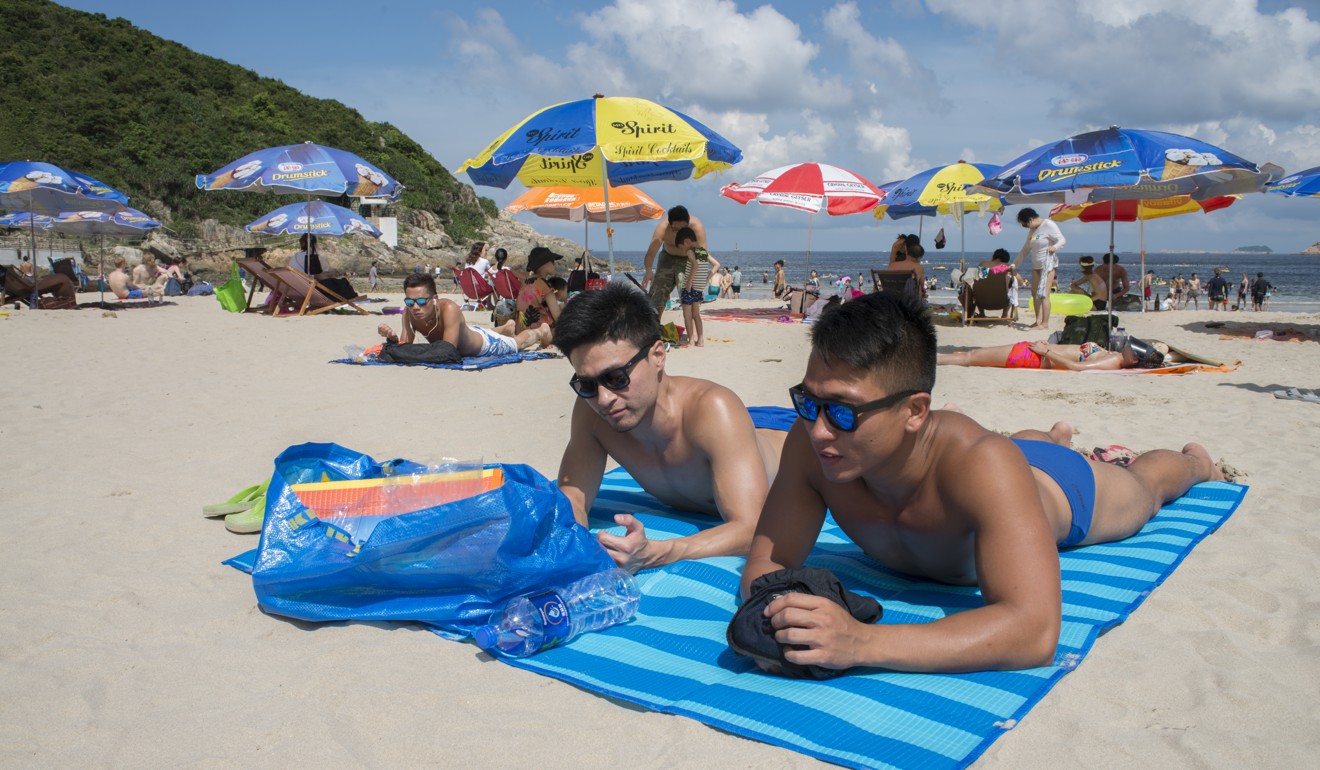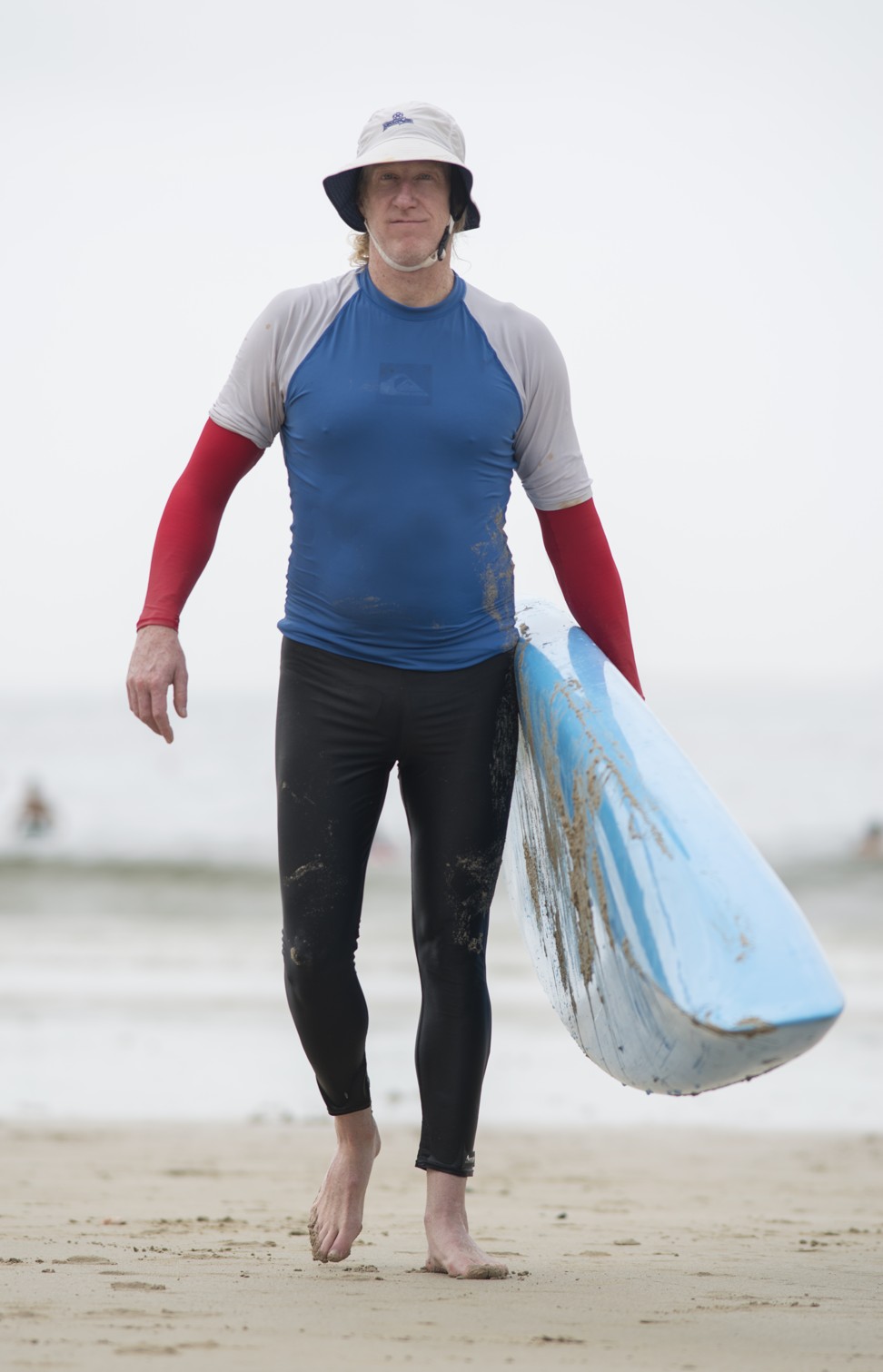
Hong Kong skin cancer rates set to rise, as victims speak on the risks of a life in the sun
With more Hongkongers chasing golden tans than 15 years ago, experts say skin cancer cases will continue to climb in the coming years. For many who grew up on beaches or work outdoors, the damage has already been done
Most weekends you will find Scott Burton out on his surfboard or going for a swim at one of Hong Kong’s beaches.
“I love surfing and swimming and doing triathlons,” he tells me after a recent two-kilometre open water swim. “I grew up on the beach, so the beach was always part of my life, and even living in Hong Kong I try to keep it the same way.”

But the Australian expat’s scarred skin tells a scary tale of his love of the outdoors. Now in his early 50s, Burton has had 11 basal cell carcinomas – a type of non-melanoma skin cancer – surgically removed, having been diagnosed with his first back in his 30s.
“The damage was done in my childhood years, and I am paying the price for it now,” he says. “At least every couple of years they have found something that needs to be cut out.”
Four questions to help pick the right sunscreen this summer
He points to a 4cm-long scar on his forehead, a constant reminder of the four-hour operation needed to remove a nasty growth. “They needed to cut wide enough to cut it all out. That was probably the most frightening one.”
Burton’s case is not unique. Figures from the Hong Kong Cancer Registry show that between 2005 and 2014, the number of new cases of non-melanoma skin cancer a year in Hong Kong shot up by 65 per cent, from 569 cases to 941. For the more aggressive melanoma skin cancer, the number increased 56 per cent during the same time period, from 50 new cases to 78.
Non-melanoma skin cancer is currently the 8th most common cancer in Hong Kong. It is generally a more localised form of cancer and most cases are not life-threatening if treated early. The most common forms are basal cell carcinoma and squamous cell carcinoma.

Experts fear skin cancer rates will only continue to rise in the next decade as they see more local Hongkongers ditching their parasols in favour of a golden tan.
“I don’t think people are protecting themselves against UV [ultraviolet radiation] now, because Hong Kong people think their skin is not that fair [and] they are not that prone to skin cancers or sun damage, so they are not paying very much attention to the sun,” says dermatologist Joyce Tang from SkinCentral.
Five tips to reduce your risk of skin cancer
Tang says the rise in new cases in the past decade is a result of more people getting themselves checked out. More Hongkongers visit a doctor now when they find a skin abnormality, she says, crediting better education and skin cancer awareness campaigns. She also says a greater number of older Hongkongers, who have spent a lifetime working in the sun, get a check-up when they notice changes in their skin.
“Many years ago, Hong Kong’s fishermen and villagers were not aware of the skin protection needed but they were in the sun quite a lot. So after many decades, when they are 60 or 70 years old, they have skin cancers,” Tang says, adding that advancing medical technology is also helping pick up cases.

This decade is proving to be critical as more Hongkongers head out to enjoy the outdoors – but without sufficiently protecting themselves from the sun with sunscreen and protective clothing. This is why Tang expects the number of new skin cancer cases to continue to climb in the coming years.
“While some people now are more aware of sun damage because of [local] campaigns … [people are also] more likely to be sunbathing now because they are worried they don’t get enough vitamin D and want more colour in their skin.”
Burton, who has lived in Hong Kong since 2002, has witnessed a huge growth in people heading outdoors for leisure. He says more needs to be done to drive awareness of skin cancer.
“You can see at all the sporting events and endurance events, people are out in the sun either hiking or doing open water swimming or kayaking, a lot more than what they were doing 15 years ago,” he says. “Growing up in Australia, there were always campaigns about sun awareness. You don’t see as much of that here.”

Once someone is diagnosed, cutting out the skin cancer is the most common form of treatment. But Tang says common skin cancers can also be treated with radiotherapy, applying immunotherapy ointment, or cryotherapy – essentially freezing the affected area. She says some dermatologists are also looking into a supplement called nicotinamide that can be taken as a preventative measure against non-melanoma skin cancer. Some believe it reduces the risk of getting pre-cancerous sunspots, but its benefits are still under investigation.
Once your skin starts to [get sun spots], it’s for the rest of your life. It doesn’t get better, it just gets worse
Tang has specialised in skin for the past seven years, but has taken a particular interest in skin cancers since 2015, after she started seeing more patients with skin lesions. She says that along with older Hongkongers, a growing number of expats, who have been exposed to the sun as children growing up in their home countries, are only now seeing the effect.
Chinese researchers report breakthrough in fight against skin cancer
Avid surfer Kenneth Howe is now paying the price for his love of the outdoors. He stands out among the throngs of bikini- and boardshort-clad beachgoers around him, and not just because of his height – over six feet tall – and long locks of sun-bleached hair. When he heads into the ocean, he is covered from head to feet.
“I surf in long pants and long sleeves, and a full brim hat,” he says, explaining that this includes an SPF50 rash shirt and solar arm sleeves. He coats his hands and face – the only exposed body parts – with a high SPF sunscreen and slathers zinc on top of that. This “suit of armour” is intended to prevent further skin damage.

Every year Howe gets frozen off up to 20 pre-cancerous sun spots, known as actinic keratosis or solar keratosis, with liquid nitrogen. His pale skin has borne the brunt of 17 years growing up on a beach in New Jersey, 15 years working on ski slopes in the Rocky Mountains, and now 18 years surfing in Hong Kong.
“I don’t get tan, I get shades of pink,” he says. “I first went to a dermatologist when I was … about 38 years old, and he said ‘I have never seen anybody that young with these [solar keratoses].’ So that’s when it was a wake-up call for me.
“Once your skin starts to [get sun spots], it’s for the rest of your life. It doesn’t get better, it just gets worse. [Removing them] is very painful – they sit there with the stop watch and burn you for five to seven seconds.”
How poor air quality in Hong Kong is damaging your skin - and the cancer risks to watch for
Howe has also had to apply immunotherapy cream to his face, which he says “he would not want to wish on anybody”. “I did a topical chemotherapy on my face for a month, and it eats away at all the damaged skin cells, so your face ends up looking like a burn victim,” he says. “For a month it was super painful, super itchy, and your energy levels get so weak, because like actual chemo, the therapy is attacking your immune system.”

For him the damage is done, but he hopes others learn from his mistakes and take heed of his attire. “It’s a visual reminder of your past sins in the sun.”
Tang urges people to continually monitor their skin for any changes, especially if they have a family history of skin cancer. She says you should speak to your doctor if you have any dark spots or red patches that are bleeding, flaky and never go away; any small lumps that are red, pale or pearly in colour; or new freckles or moles that change colour, thickness or shape over a period of weeks or months. And her final piece of advice, of course – always cover up in the sun.

